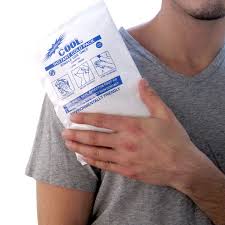The month of October makes most people think of pumpkin spice lattes, vibrant leaves, and Halloween costumes. But here at Premier Orthopaedics, we have something else we keep an eye out for, too, because it's also the time of year known as National Spine Health...
LATEST BLOGS
September is National Vascular Disease Awareness Month
As September starts, it's National Vascular Disease Awareness Month. This is a great time to learn about the health of our veins and arteries. Vascular diseases include problems like deep vein thrombosis and peripheral arterial disease. Read on to learn how to keep...
Causes & Treatment Options for Sciatica
Pain that starts in the lower back and radiates down the back of the leg is what is commonly referred to as sciatica. The pain follows the path of the sciatic nerve down the leg which means that typically, only one side of the body is affected. The sensation that...
What Swelling Can Tell You about Your Child’s Injury

Many children get involved with sports at a young age. This is a great way for kids to learn about sportsmanship, expend some energy, and meet new friends. It also helps children stay healthy and has been shown to reduce the risk of diabetes, obesity, cancer, and cardiovascular diseases. However, because children’s bodies are still developing, any injuries they sustain have the potential to be very serious.
When it comes to your child getting injured during sports, it’s best to always be prepared.
Being educated about injuries will help you understand them and how better to deal with them.
Learn more about swelling and how it can help you identify a child’s injury.
What is Swelling?
Swelling is the body’s reaction to an injury. Whether you twist an ankle, fall on your wrist, or you experience some type of trauma, the body experiences an inflammatory response. The body responds this way in the first step toward healing. Redness, heat, and pain are also associated with this stage, but sometimes the body provides a response that is excessive.
How to Identify Your Child’s Injury by Swelling
You can be sure that your child is dealing with some type of injury at the first sign of swelling. The amount of swelling can help determine the severity of the injury. If there is just a little bit of swelling, the injury probably isn’t too bad. If the area is completely swollen, it could be a severe injury such as some type of fracture. This can also be accompanied by bruising.
What to Do About Swelling?
The R.I.C.E. method is the most effective treatment for swelling and includes: Rest, Ice, Compression, and Elevation. When your child experiences an injury, be sure to pull them out of the game or have them stop the activity they’re participating in immediately. Rest the injured area to protect it and to prevent it from getting any worse. The next step is to apply ice to the injury. Hold an icepack on the affected area for twenty minutes on and then twenty minutes off for the first 72 hours. Compress the injury by wrapping it in an ACE bandage that should be snug, but not too tight. The next step is to elevate the injury. Prop the affected area up so that it’s elevated above the child’s heart.
If you find that the R.I.C.E. method doesn’t minimize your child’s swelling within two days, it is probably an injury that needs to be addressed by a doctor immediately. Be sure to take your child to an emergency room or to your doctor right away.
Now that you have learned more about injuries and how to deal with swelling, you can be more confident knowing that you will be prepared if your child faces an injury while playing sports.
For more information on what you can do to prevent fractures and fracture treatment methods, click here to download our eBook, Understanding Fracture Care: Causes, Diagnosis and Treatment.


